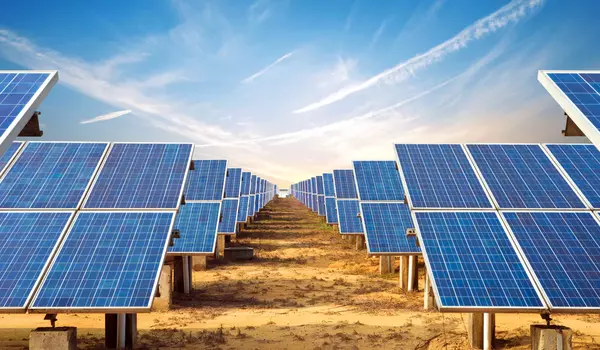Rooftop solar panels can help conserve water in a few different ways. One way is by reducing the demand for electricity from fossil fuel power plants, which often rely on water for cooling. Because solar panels generate electricity through photovoltaic cells, they do not require water to generate electricity. This means that as more people switch to solar energy, there is less demand for water-intensive forms of electricity generation.
Another way that rooftop solar panels can help conserve water is by allowing people to use solar energy to power their homes and businesses, rather than relying on energy from power plants that use water to generate electricity. This can help to reduce the amount of water that is needed to produce electricity and, in turn, help to conserve this valuable resource. Finally, solar panels can also help to reduce water usage in other ways, such as by enabling people to use solar energy to power irrigation systems for their gardens and landscaping. This can help to reduce the amount of water that is needed to keep plants and lawns healthy and green.
Rooftop solar cells not only reduce carbon emissions, but they also save a significant amount of water, according to a pair of Duke University researchers who did the math. They discovered that installing rooftop solar can save a household an average of 16,200 gallons of water per year. In some states, such as California, this savings can reach 53,000 gallons, which is equivalent to 60% of the average household water use in the United States. The savings on your home water bill will not be visible, but they are still significant.
This is due to the fact that energy consumption is inextricably linked to water consumption. In the United States, electrical energy production consumes nearly as much water as agriculture. However, this figure does not include the additional water required to produce fossil fuels in the first place, or to manage coal ash waste.
To generate electricity for the grid, we need to mine and burn coal, frack and pump natural gas, and cool nuclear plants, all of which require large amounts of water that are constantly lost.
Avner Vengosh
“To generate electricity for the grid, we need to mine and burn coal, frack and pump natural gas, and cool nuclear plants, all of which require large amounts of water that are constantly lost,” said Avner Vengosh, a Duke University distinguished professor of environmental quality in the Nicholas School of the Environment and co-author of a new paper published in Science of the Total Environment.
“However, with the solar cell, it’s a one-time consumption of much a lower volume of water for manufacturing,” Vengosh said. “And then, once it’s installed, there’s no longer any water use coming from that for the next 25 years of expected use.”
Currently, more than 70 percent of the world’s solar panels are being made in China, so the water consumption to generate solar energy occurs overseas. Co-author Erika Weinthal, a professor of environmental policy in the Nicholas School, said that to understand the broader water impacts from solar panel production, it is vital to look at the entire supply chain across the world.
“From a contamination point of view, solar cells have huge potential for environmental damage,” Vengosh said. “It contains heavy metals, some of which are very toxic, and therefore they could have impact on the immediate environment where the manufacturing occurs.”
But after that, the water consumption of solar is zero. Previous studies have attempted to evaluate the amount of water use for different stages of energy production, typically expressed as the volume of water to given energy such as liter or gallon per gigajoule. In the new study, the authors combined energy sources that are used to generate electricity for the residential sector across the contiguous U.S. and translated that to the volume of water consumption in each state.

After evaluating the statewide water use for the residential sector, the new study calculated the virtual water use of individual homes in 48 states. These calculations estimate that the total amount of water consumed for powering the residential sector across the U.S. is 2.6 trillion gallons.
Converting to solar in homes reduces the use of the grid electricity and therefore also the volume of water. In some states, like in the southwestern U.S., the individual household water saving can reach up to 1000 percent upon installing rooftop solar.
These water use calculations are a follow-up to a recent book Vengosh and Weinthal published earlier this year on intersection of energy and water quality that provides a detailed baseline for the water consumption of various fossil fuel sources.
During the pandemic shutdown, the authors had decided to add solar panels to the home they share. While in the beginning the major motivation was to save carbon emission, after a while they realized it can save also water.
“So this article is really a product of wanting to decarbonize our own personal life,” Weinthal said. “I teach global environmental politics, and I teach about the Paris agreement, and I always try to get the students to connect what’s happening at the interstate level to what we can do with our own forms of agency.”
Today, photovoltaic solar cells account for about 1.5 percent of the nation’s electrical supply. That represents a saving of 99 billion gallons of water a year, the authors estimate, which is equivalent to about four days of California’s total water usage. But as the solar percentage grows, so too will the savings. Their paper also compares water consumption for energy by state, since each state uses different energy sources for electricity generation and has different use patterns and number of homes.
The New England states, for example, show huge wins for converting to solar because they don’t use much electricity for air conditioning and they tend to heat their homes with oil, not electricity, Vengosh said. Arizona and California, states which have water shortages and a lot of sunny days, would also be big winners.
In their book, Weinthal and Vengosh showed that water use is only part of the puzzle. Contamination of water resources because of coal mining, fracking, and coal ash disposal further reduce the water availability, and therefore, the water footprint from fossil fuels extraction is far larger than we think.
“We also tried to quantify water quality effects, like how much water is being contaminated from an event such as oil spill or chronic disposal of coal ash to the water resources,” Vengosh said. “So if you know the volume of the oil spill, you can translate it to the volume of water that being contaminated and lost.”
What’s important is to assess the total cost of any technology, Weinthal said. “We need to be moving towards renewables, solar and wind, but in doing so, we have to recognize that for any form of energy infrastructure, even if it is renewables, there may be some costs when it comes to water. One has to think about the water footprint for any form of energy production,” she said. The researchers have already turned their attention to the water use and environmental effects of lithium mining, a metal that is key to next-generation batteries.
















